
BARBERED AND DRESSED IN LONDON’S FINEST FASHION
[caption id="GroomingtheEnglishGentleman_Feature" align="aligncenter" width="1024"]
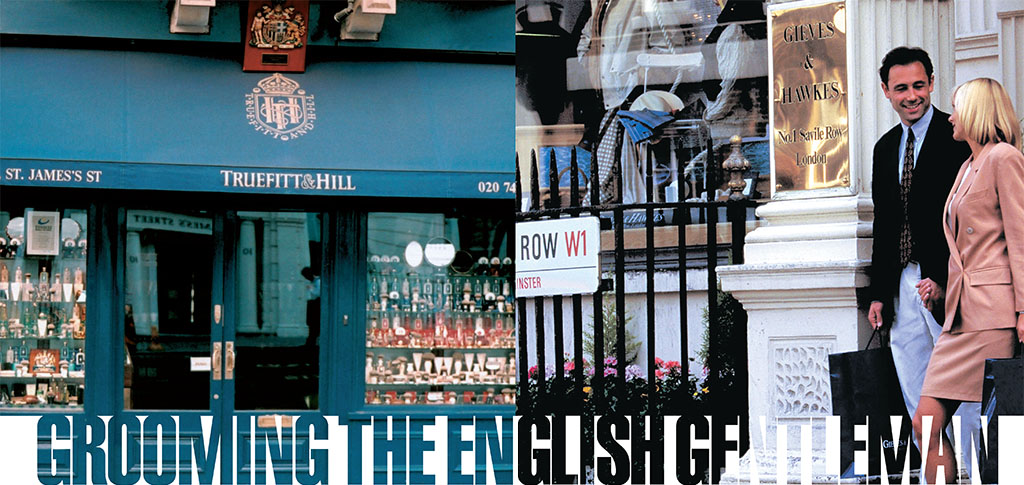
Nigel Reed/Alamy Images
TRUEFITT & HILL—THE WORLD’SOLDEST BARBERSHOP
Charles Dickens referred to Truefitt’s as “the excellent hairdressers,” where “they are learning French to beguile the time.” William Thackeray, writing in the days when Truefitt’s made wigs, said, “a man may have his feelings, although he gets his hair from Truefitt’s. ” The Guinness Book of World Records calls the elegant establishment on London’s St. James’s Street the oldest barber business in the world. The first lipstick was probably made by Truefitt’s resident chemist in 1878, its color guaranteed to last two years!
The year 1805 saw both the Battle of Trafalgar and the opening of Francis Truefitt’s gentlemen’s salon at 2 Cross Lane, Long Acre. Truefitt, a barber, wigmaker and perfumer, was soon appointed court wigmaker to George III. He also styled himself “court hair cutter and “court head dresser.” Assisted by his brother Peter, he formulated colognes, pomades and other gentlemen’s cosmetics on the premises.
Patrons could also have their hair groomed by a stiff revolving brush hanging from the ceiling and guided by the hand of a frock-coated operator. Truefitt’s “Toilet Club” survived until 1936, and its punched tickets indicating shaves, haircuts and the like are still found among the papers of deceased patrons and sent to the shop archives.
Along with lipstick, Truefitt busily turned out back and head scratchers, shaving brushes, razors, a “cosmetique stick” for grooming facial hair and scents. Some of those colognes were floral, but “Aldershot Bouquet,” “The Choice of the Rifle Brigade” and “The Guards Own Bouquet” carried a distinctly military air.
[caption id="GroomingtheEnglishGentleman_img1" align="aligncenter" width="1024"]
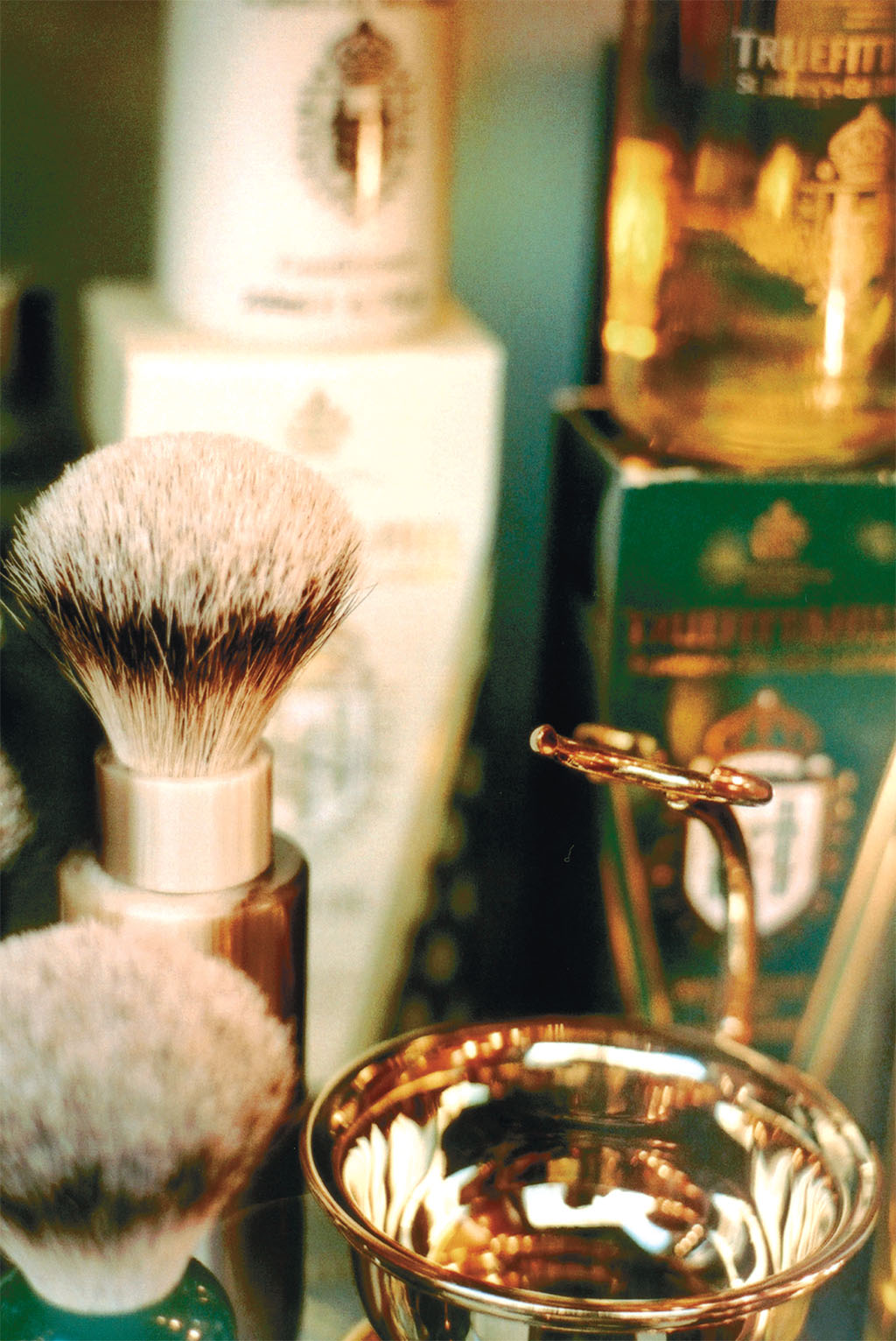
www.britainonview.com
“We now have seven proprietary scents,” says Truefitt Director Joanna Broughton. “‘Trafalgar’ commemorates Lord Nelson’s victorious battle in 1805. `Spanish Leather’ was very popular in England during the Napoleonic campaigns, and while Wellington fought on the peninsula, that was the fragrance that surrounded him. The Duke of Edinburgh likes `West Indian Limes’which goes back to English colonial times.”
[caption id="GroomingtheEnglishGentleman_img2" align="aligncenter" width="878"]
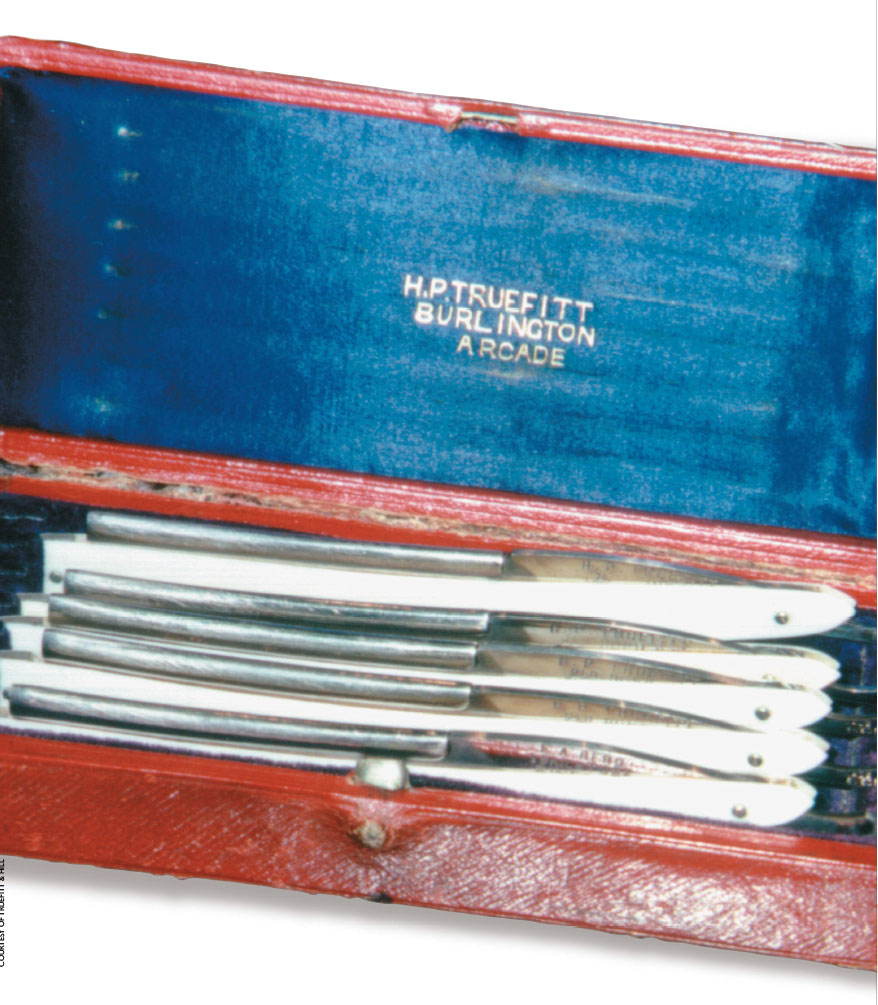
NIGEL REED/ALAMY IMAGES
Truefitt’s opened its “Manicure and Chiropody Courts” in 1880, overseen by Amelia West, an American manicurist who stayed for 60 years and trained generations of British manicurists. Christine Drew joined the staff in 1911 and stayed for 62 years, often attending the crowned heads of Europe. Frequently a limousine would be waiting at the end of the day to whisk her off to some elegant soiree. One client bought her a little house in Chelsea’s fashionable Cheyne Walk in gratitude for helping him stop his nail-biting.
Manicures and pedicures are still part of Truefitt’s services. “Men want to look their best,” says Broughton, “not only for their social life but for their business life. Any businessman doing a deal with dirty fingernails is not going to make a good impression.”
In 1935 Truefitt’s merged with Edwin Hill & Co., which had been in business on Bond Street since 1911. They moved to their present location at 71 St. James’s St. on Valentine’s Day 1994.
“It’s a very interesting little area here at St. James’s, because within about a hundred walking paces from each other there are eight shops with a combined trading history of 1,700 years, including Lock hats, Lobb shoes, wine merchants Justerini & Brooks, gunmaker William Evans and Truefitt’s,” explains Broughton. Exclusive gentlemen’s clubs—White’s, Brook’s and Boodles—are conveniently located just down the street.
Ancient framed royal warrants hang on the walls along with a colorful coat of arms from a client’s coach. A display case holds antique artifacts, including a set of seven straight razors, one for each day of the week, and a pomade pot bearing the label “H.P. Truefitt Ltd, Burlington Arcade and Aldershot,” retrieved from the wreck of Titanic after it was discovered in 1985.
The Duke of Edinburgh’s crest is on the shop door, and although Truefitt’s hairdressers do not make house calls, an exception is made in his case. Other royals, their names discreetly kept secret, come to the shop. They occupy one of the five chairs, one behind a curtain, in the wood-paneled sanctum in the rear. While no one has learned French to beguile the time there recently, neither is heard the sports-and-weather chatter common to American barbershops. “I think it stems from the days when a gentleman did not strike up a conversation with his barber, and the barber did not speak unless spoken to,” says Broughton. “That tradition stayed with this shop,” she adds.
“Recently there has been a great renewal of barbering services,” Broughton revealed. “I think the modern gentleman realizes that to be perfectly groomed is very important. There was a time when the disheveled look was quite accepted, but that’s all gone. Today’s modern gentleman is very conscious of his looks.” From tonsure to pedicure the English gentleman can leave Truefitt’s impeccably groomed from head to toe.
[caption id="GroomingtheEnglishGentleman_img3" align="aligncenter" width="849"]
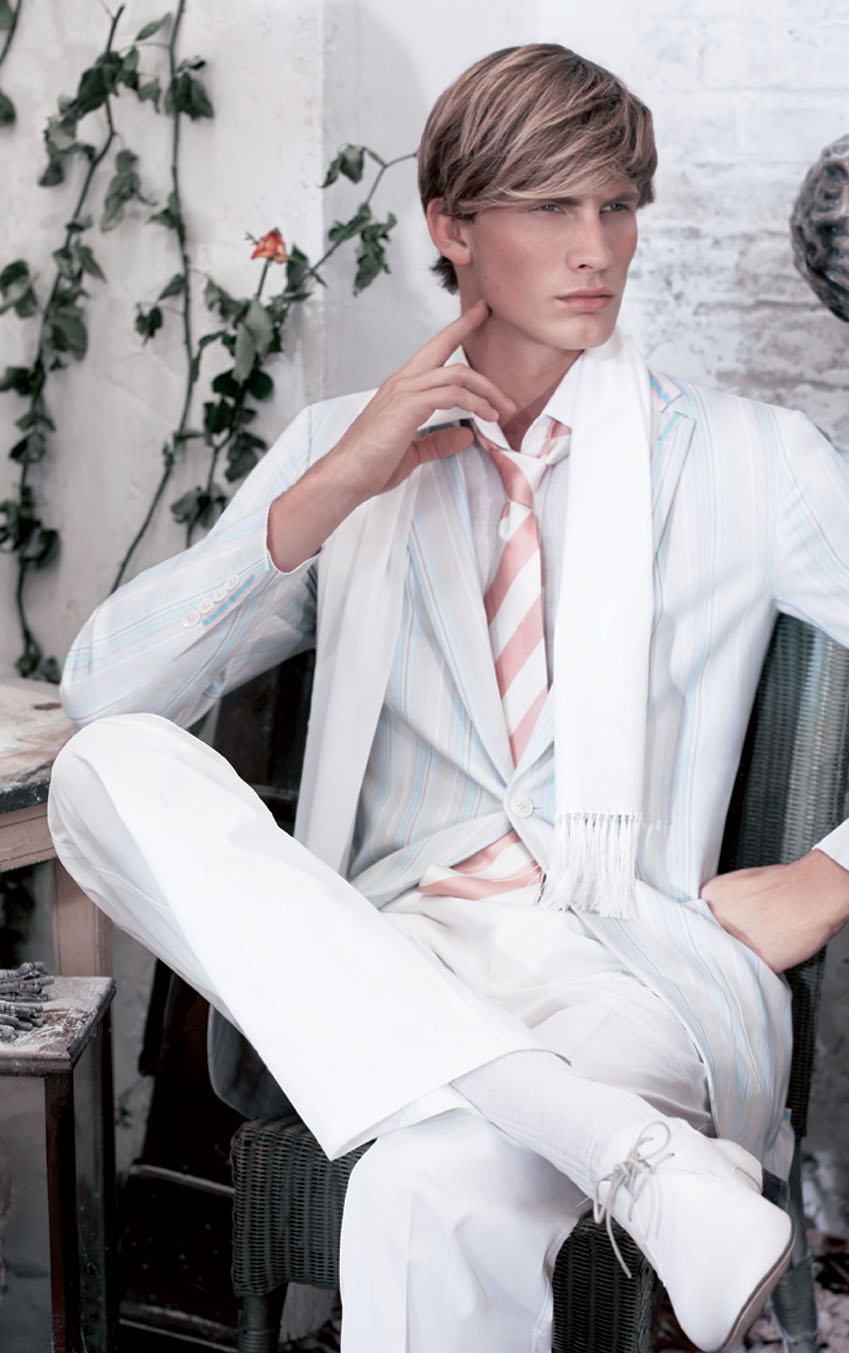
COURTESY OF TRUEFITT & HILL
[caption id="GroomingtheEnglishGentleman_img4" align="aligncenter" width="620"]
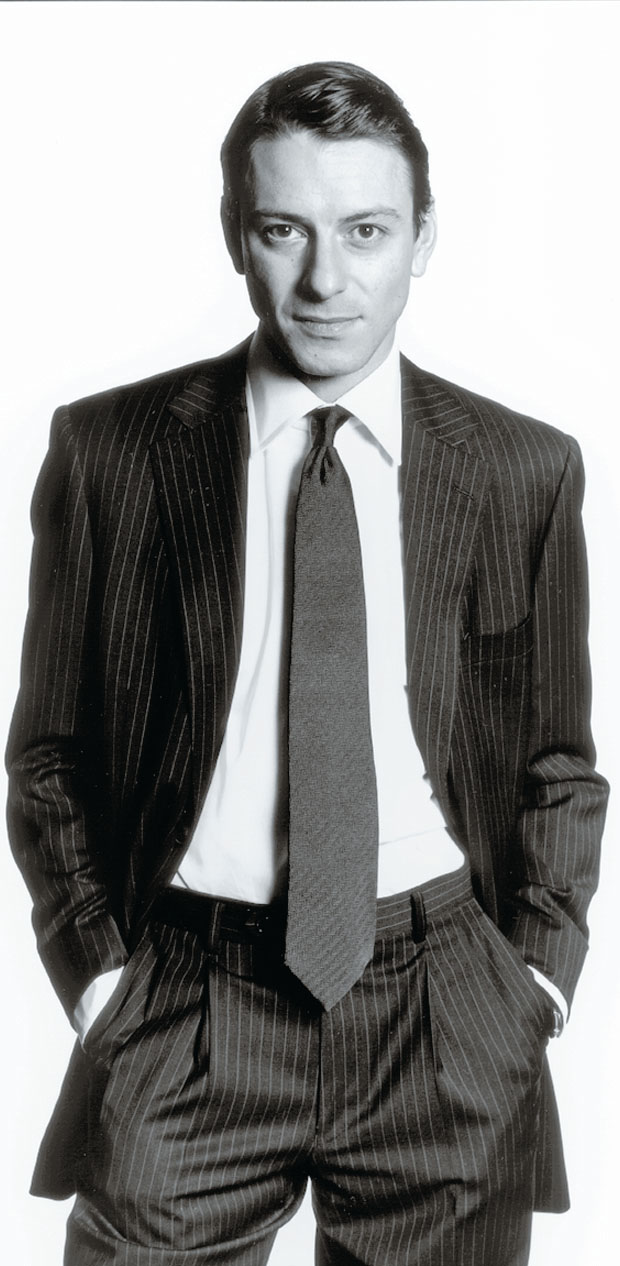
[caption id="GroomingtheEnglishGentleman_img5" align="aligncenter" width="693"]
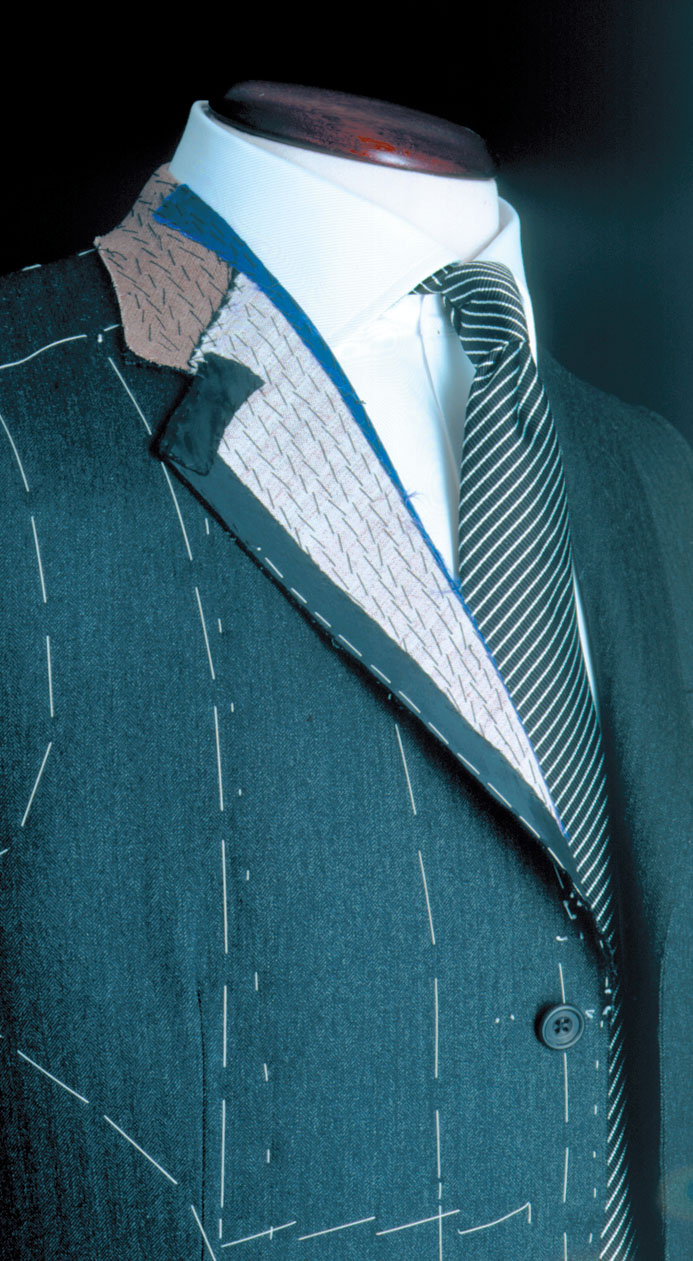
Courtesy of Gieves & Hawkes
GIEVES&HAWKES—KEEPING TRADITION, BREAKING RULE
From military uniforms to street wear, hats to suits to boots, Gieves & Hawkes has outfitted royalty, heads of state, media stars and captains of both industry and armies. A tour of London’s Savile Row, the world’s most prestigious garment district, starts with the shop’s tall, elegant building at No. 1. The address is more than a mere house number to Robert Gieve, vice chairman of the firm and fifth in a line that has represented tailoring excellence for over two centuries. He explains why this address is considered the best on the street: “Anything that’s number one is seen to have precedence over number two or number four. Number one is special because of our long history, our marketing position and all of our other entrepreneurial activity and also because we have never wavered from a commitment to quality and excellence.”
“It was always the custom to go to your tailor of bespoke garments and two blocks round the corner to your shoemaker, a short distance away to your hatter, somewhere else to get your shirts,” says Gieve. “My great-grandfather thought it was nonsense to have won and held the goodwill of his customers as far as their tailored garments were concerned and then to see them hail a hansom cab and send it clip-clopping into the distance with a valued patron in it, going elsewhere to buy his shirts. So he brought into this business the best shirt makers that prevailed, the best hat makers and shoemakers, and at a very early stage in our history made Gieves & Hawkes into a miniature men’s store.”
Gieves was founded in 1785 by “Old Mel” Meredith, who set up to make military uniforms in Portsmouth. “Meredith was unique in his day because he didn’t like being a tradesman,” says Gieve. “There wasn’t a middle class. You either had it or you didn’t; you inherited it or you earned it. The tailor was very much an artisan, but Meredith broke the rules. Yes, he had a fine business, but he rode to hounds, he dined and went to social balls with his customers and he held a commission in the militia at Portsmouth. Now, you do not do that when you are ‘in trade,’ but his customers loved it. It meant that he lived beyond his means, I’m afraid, and his business was vulnerable.” Gieve continues, “That’s where the first James Gieve came in, because he was in the bank that kept the books. He saw an opportunity, put down his quill pen and took over the business in 1852.”
Portsmouth was the premier dockyard of the realm, and James Gieve was determined to be its premier outfitter. He and his partner, Joseph Galt, equipped a yacht and sailed into the midst of the Crimean War to provide tailoring and other amenities to the troops. They made fitted sea chests and bought anniversary Flowers and theater tickets for of®cers’wives. They courted cadets destined for the Royal Naval College, visiting each one in his home to discuss his out®t, and personally oversaw them as they boarded the train for college to make sure they were sartorially correct.
[caption id="GroomingtheEnglishGentleman_img6" align="aligncenter" width="1024"]
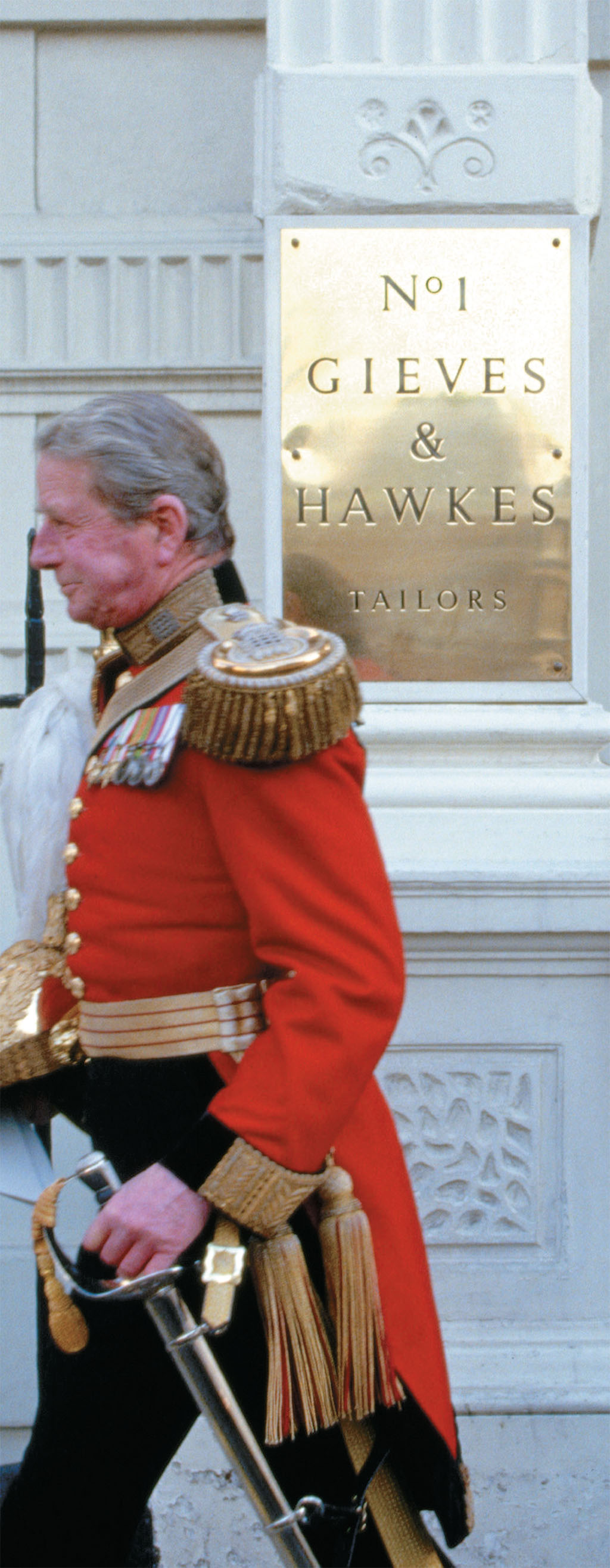
ADAM WODFITT/CORBIS
Lord Horatio Nelson was a customer, as was his Flag Captain Thomas Hardy, who took lodgings over the shop in 1827. Nelson’s tailoring may have been his undoing: A French sharpshooter unerringly picked out his sparkling gold Gieves lace at the Battle of Trafalgar.
In 1880 James Gieve came up with a new innovation, a prototype mail order catalog. Customers, whose measurements were, of course, on file, could take it with them to the far reaches of the empire. “Whether in the foothills of the Himalayas, on the Indian continent or elsewhere, they went for six or eight years to be government officers, colonial officials, tea planters or whatever,” says Robert Gieve. “Wherever they were, they lived to a British style, following the daily routine, dressing for dinner. How did they follow that style? Every customer, on his departure from these isles, took one of these books with him.” The catalogs, complete with fabric swatches, showed uniforms and military gear as well as civilian clothing, including boots, shirts, llama wool underwear, socks, ties, jewelry, braces (suspenders) and flannel “cholera belts,” which were worn around the waist by soldiers and civilians, who believed these would keep the abdomen warm and resistant to infection.
Gieves outfitted several royal customers over the years, but the first royal appointment came from George V in 1911. Today it holds warrants from the Queen, the Duke of Edinburgh and the Prince of Wales.
The firm changed its flagship address several times, moving ever deeper into the heart of sartorial London. Its fortunes rose and fell according to the wars being waged at any given time, making uniforms for China, Ethiopia, Greece and other countries as well as Britain.
In 1922, with little call for the braided and gilded military uniforms of the past, Gieves came up with another idea that hit the street with the force of a depth charge: ready-to-wear. Tailors in the past had always made stock garments in slack periods for customers who needed them quickly, but Gieves went about it aggressively. “All the other tailors viewed it with absolute horror,” says Gieve, “but now we’re still doing it and it rests very well alongside the bespoke.”
In 1974 Gieves bought out the firm of Hawkes, headquartered at No. 1. Hawkes had its beginning in the 1770s when Thomas Hawkes of Stourbridge started as a journeyman with one Mr. Moy, a velvet-cap maker on Swallow Street. Moy had an addiction to drink, leaving Hawkes to run the shop and, eventually, his own tailoring establishment. This firm’s two great contributions to the trade were the solar topee and the shako, a coal-scuttle-shaped leather helmet that protected the wearer’s head.
[caption id="GroomingtheEnglishGentleman_img7" align="aligncenter" width="1024"]
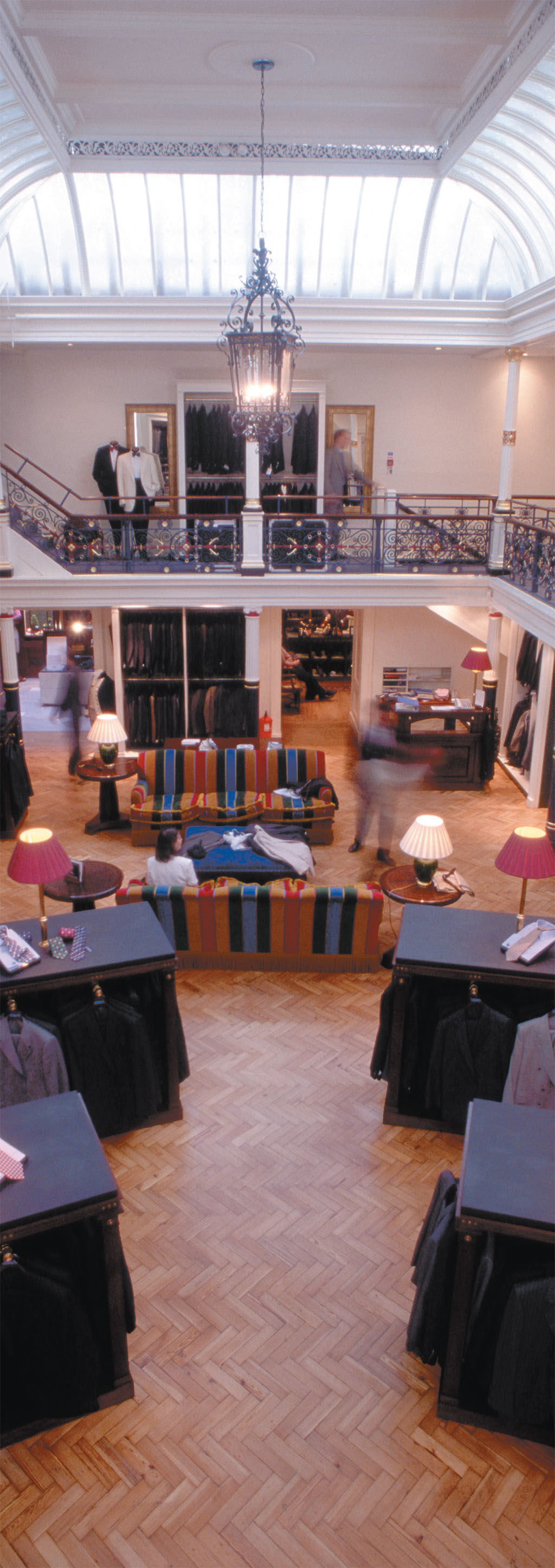
Rupert Horrox/Corbis
“Hawkes learned how to ‘jack’ leather,” Gieve explains. “He boiled it and treated it with acid until it became as hard as wood. Infantrymen were very vulnerable to cavalry charging through the lines and slashing with swords, so that was an early tin helmet.”
No. 1 was built as a gentleman’s townhouse. By 1870 it was home to the Royal Geographical Society. “In 1891 electricity was put in,” Gieve says. “It was one of the first fully electrically illuminated houses in London. They had a reception so the members could look at this wonderful innovation.” The society glassed over the garden and courtyard to form a library and map room, which today is Gieves’ ready-to-wear department. The body of explorer David Livingstone lay in state there in April 1874, the spot marked by a plaque.
“There is David Livingstone on the right,” says Gieve, pointing out a framed etching on the wall. “He is raising a cap which we provided, along with other bits and pieces. On the left is Stanley with his Hawkes solar topee.” In other rooms of this Palladian-style building can be seen a naval officer’s sea chest made by Galt & Gieve around 1854 and personally restored by Robert Gieve, the original ledger from 1833 recording items purchased by the Duke of Wellington, and various uniforms made throughout the ages by Gieves. Some are displayed in brass and mahogany showcases from the Great Exhibition of 1851, used separately by Gieves and Hawkes. A photograph of Charles Laughton as Captain Bligh in Mutiny on the Bounty is testimony to the fact that Laughton visited the shop to examine Bligh’s specs and measurements before embarking on the role. A salesman promptly produced them from a dusty ledger in the basement.
Upstairs, craftspeople create the impeccable bespoke garments that are still Gieves & Hawkes’ stock in trade. The process of outfitting a new customer takes eight to 10 weeks, from taking measurements to the final tailoring. These garments do not come cheaply.
“I don’t talk of costs,” says Gieve, although he admits: “The individual will have invested some £1,800 in the garment that he is going to wear away with such pride. But I would consider a debate as to the cost of the suit quite irrelevant.” Challenges facing Gieves’ tailors today include pockets to conceal side arms or mobile phones. Gieve thinks that his ancestors would approve of the firm’s innovations, which include colored dress shirts, bright ties, advertising on taxis, worldwide marketing and the 1995 purchase of the adjoining premises.
“The greatest challenge is not to keep looking over our shoulder into the past, although we do that now and again to draw inspiration,” explains Gieve, “but to keep the business moving progressively forward. It’s harnessing the past so we may use it to our best advantage as we look forward.”
Gieves & Hawkes is at No. 1 Savile Row, London.





Comments